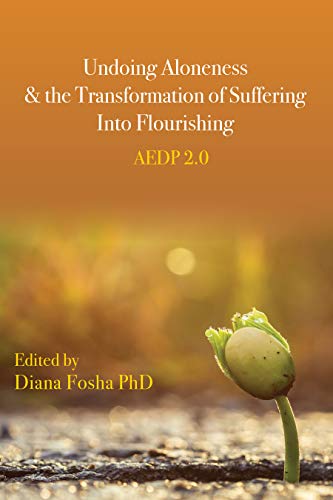Customer Services
Copyright © 2025 Desertcart Holdings Limited
Desert Online General Trading LLC
Dubai, United Arab Emirates


Undoing Aloneness and the Transformation of Suffering Into Flourishing: AEDP 2.0
M**.
A Celebration of Transformation
AEDP 2.0 is a celebration of transformation in this incredible evidence-based therapy model that has captured the imagination and healing potential of a growing community of therapists around the world.Each expertly written chapter weaves seamlessly with the others, reminding us of how this model continues to evolve, providing a comprehensive and integrative frame for the work of not just experiential and dynamic psychotherapists, but for a wide range of mental health professionals with different orientations and approaches, many of whom work tirelessly with our most vulnerable populations.This book is a testament to the visionary work of Diana Fosha and her amazing faculty who continue to extend the phenomenology of transformation through the healing power of our emotions and the neurobiological core self. With numerous case examples and brief transcripts of their work, they masterfully demonstrate the efficacy of AEDP in treating trauma and the wide range of problems that often follow it.I would highly recommend AEDP 2.0 for all therapists who are open to change and want to learn more about how to bring themselves into the therapeutic process in their own unique human way that not only facilitates their client’s change but their own as well.I will keep this book close to hand and heart, delighting in the transformation of AEDP and celebrating the transformation it helps us see as possible. I look forward to the next version and being a part of AEDP growing and flourishing at a time when we need more than ever to be open to our differences and change in the world.As the cover of this book wondrously depicts, AEDP helps us see the beautiful kaleidoscope of flowers, inside and out, that always find a way to find the light, guiding us back home to the therapists and people we were always meant to be.
D**M
Great book on psychotherapy
I have loved the AEDP therapy model since I discovered it. It is a very powerful and positive model that works. AEDP is one of the humanistic, experiential therapies that emphasizes that our nature is to heal from difficult and painful experiences. The therapeutic relationship is described as one where a patient will be met and will not feel alone with their problems. The chapters are written by a variety of senior therapists who present transcripts of their work and illustrate how the interactions occur in order to transform suffering into thriving. I have not yet finished it as there is a lot here. I hope that this model will become more popular amongst my fellow therapists as it captures so much of other powerful methods and integrates them into a more cohesive whole. that works and makes sense.
J**S
The Title Says It All...Undoing Aloneness, Transformation, Flourishing in Life
This theoretical framework of therapy has captivated my heart, mind, and body for the past 3 years. Accelerated Experiential Dynamic Psychotherapy, developed by Diana Fosha, AEDP, for short, is a healing-oriented, mind/body experiential therapy with roots in affective neuroscience, attachment theory, developmental studies of caregiver-child interactions, interpersonal neurobiology, emotion theory, transformational studies, somatically based trauma studies, psychodynamic, relational psychoanalysis, and positive neuroplasticity studies (Fosha, 2021). I've been particularly captivated with AEDP because of its integrative focus on healing both mind and body. This therapy modality seeks to cultivate the capacity for people to use a right-brain-to-right-brain communication to regulate emotional states by moment-to-moment attuning. I love the experiential methods it provides when regulating intense emotions that occur both in heart-breaking trauma and the positive emotions of transformation. A key signature in AEDP is its meta-therapeutic methods where the therapist and client relate and reflect together what was therapeutic about the therapy session. I've experienced first-hand in my own healing journey and with others how AEDP interventions have helped relieve stress, undo aloneness, and create dyadic emotional regulation. The AEDP stance seeks to co-create safety and expand the realm of transformational experiences (Fosha, 2021).This book is for all mental practitioners, researchers, and learners. Reading through this wonderful resource is like going through a journey of trusting the process of change and healing. There are three elements highlighted throughout the book: undoing aloneness, transforming suffering, and flourishing. It is in the co-creating safety between therapist and patient where unwilled and undesired aloneness is undone. Much of our suffering is experienced in our attachment and trauma wounds. AEDP is a helpful map to navigate through the nuances and dynamics of suffering. AEDP does not stop at just processing what is hard and difficult but invites patients to experience and envision what flourishing and further whole-heartedness can look like.
Trustpilot
1 month ago
2 months ago